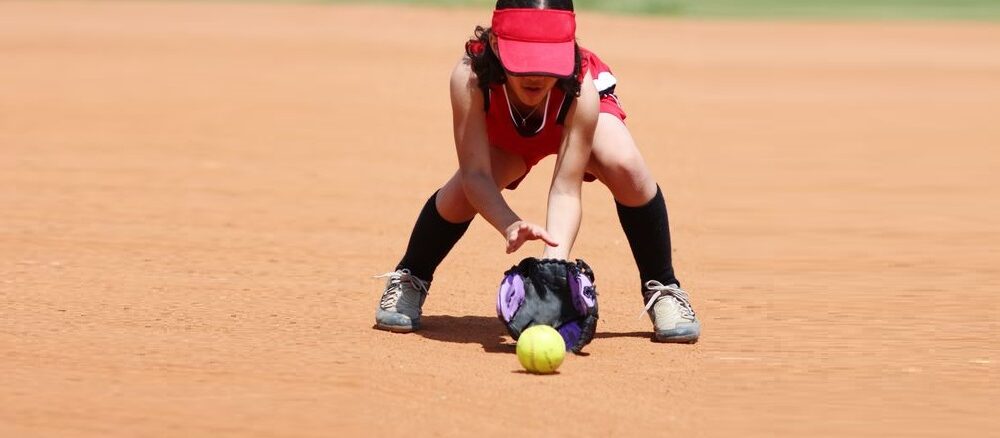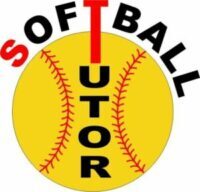
Softball ground ball fielding can be easy and at the same time it can be scary depending on the level of confidence that the fielder has and her previous experiences with softballs coming at her. New players will more often be afraid of the ball because they do not want to get hurt. For some infielders, and for some teams, all infielders, they will wear a fielding mask for extra protection and to feel safer as they set up for the ball off the bat.
The most important thing for fielding is to be ready. Or at least as ready as possible without being dangerously close or too far away from the plate where it will take too long to field the ball, which allows the runner more time to get on base.
Softball Ground Ball Fielding
There are a few considerations that will help fielders to have the most success, and to field the grounder in the most efficient way for the next play.
Moving to the ball (Preparation)
We often hear coaches tell players to charge the ball. This is a good idea, as long as the body is lined up with the oncoming ball and it is going at the right speed. A sharp hit grounder that is going very fast for example would require the fielder to simply move to the side or set up square to the ball for success. By setting up square, the fielder can block the ball if she is not able to field it cleanly. The best way to get to the ball, or in front of the ball is to do so under control. By having control, the fielder is less likely to have the ball get past her due to her still trying to get ready as the ball approaches.
When the fielder charges the ball or moves to it with control, she can minimize the number of bounces it takes before fielding it. By reducing the number of bounces the ball takes, she can lessen the chances of a bad hop that comes up to the chin or gets away. It also allows for a better transition to throwing which is critical to getting that out at first or stopping a runner from advancing.
Fielding The Ball (Execution)
During the fielding process the arms should be relaxed in front of the body, with the palm of the glove on a very slight angle facing the oncoming ball. The tip of the glove stays touching the ground with the fingers pointing down. The body is almost like in a sitting position with the weight slightly forward on the balls of the feet to facilitate quick movement. The throwing hand is just on the side of the glove with the fingers pointing down so that the fielder can get the ball quickly in preparation for the next move as the ball enters the glove.
If possible, as the ball is arriving, the fielder reduces her speed to the ball if she is charging it and sets up in a slightly staggered position, with the glove side foot slightly forward to facilitate the transition to throwing. This allows her to absorb the ball into the glove as it moves back into a throwing position and the upper body rotates as she gets ready to throw to a base. The eyes must follow the ball all the way into the glove. Keeping the head steady as the chin tucks in will make it easier for the ball to be fielded rather than having it go under the glove.
After Fielding (Follow Through)
Once the ball is in the glove, the fielder closes her throwing hand over the ball and takes it into her fingers in preparation for a throw. I say her fingers because the grip should be on the seams of the ball with the pads of the fingers to increase rotation on the ball and velocity in the throw. If the ball is in the palm of the hand, there will not be as much control on the throw and it will float rather than move in a straight line to the target with speed. Using 2 hands to field the ball makes the transition to this process smoother and decreases the chance of errors.
Softball Ground Ball Fielding as an Outfielder
As an outfielder, players have more time to get in front of the ball. Stopping the ball from getting past outfielders is even more important than with infielders because they are the last line of defense. An outfielder might use a run through, or may block the ball using their body as they kneel down.
